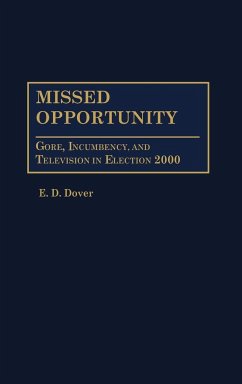
Federal Equal Employment Opportunity Policy and Numerical Goals and Timetables
An Impact Assessment
Versandkostenfrei!
Versandfertig in 1-2 Wochen
69,99 €
inkl. MwSt.

PAYBACK Punkte
35 °P sammeln!
Equal employment opportunity (EEO) and affirmative action have been important--and often controversial--political issues for more than two decades. One of the most hotly debated aspects of the federal government's EEO efforts has been the use of numerical goals and timetables in the internal federal EEO program, an approach adopted by the Civil Service Commission in 1971. In this incisive new study, Kellough examines the utility of affirmative action in the form of numerical goals and timetables by focusing on EEO efforts in federal employment. Writing for students and scholars of ethnic and m...
Equal employment opportunity (EEO) and affirmative action have been important--and often controversial--political issues for more than two decades. One of the most hotly debated aspects of the federal government's EEO efforts has been the use of numerical goals and timetables in the internal federal EEO program, an approach adopted by the Civil Service Commission in 1971. In this incisive new study, Kellough examines the utility of affirmative action in the form of numerical goals and timetables by focusing on EEO efforts in federal employment. Writing for students and scholars of ethnic and minority politics as well as for policymakers, Kellough identifies factors responsible for inter-agency variation in the achievement of EEO goals and illustrates the overall impact goals and timetables have had on minority and female employment trends throughout the government bureaucracy. Kellough begins with a discussion of the nature and purposes of goals and timetables. After reviewing the history of EEO efforts prior to goals and timetables and to the events that precipitated the move toward this approach, Kellough turns to an assessment of the impact of goals and timetables at both the aggregate level and in individual agencies. At the aggregate level, Kellough examines whether significant changes in employment trends followed the authorization of goals and timetables. Turning to an examination of individual agencies, the author assesses the extent of inter-agency variation, develops an index that ranks agencies on the extent to which they reduced the time needed to achieve parity for blacks and women, and explores the independent variables that may explain inter-agency variation in EEO progress. The study finds support for arguments that goals and timetables, agency size, resources allocated to EEO, and the disposition of agency EEO implementers affect rank on the index while indicating that other variables, such as agency growth and the structure of agency EEO efforts, appear to be less important.














